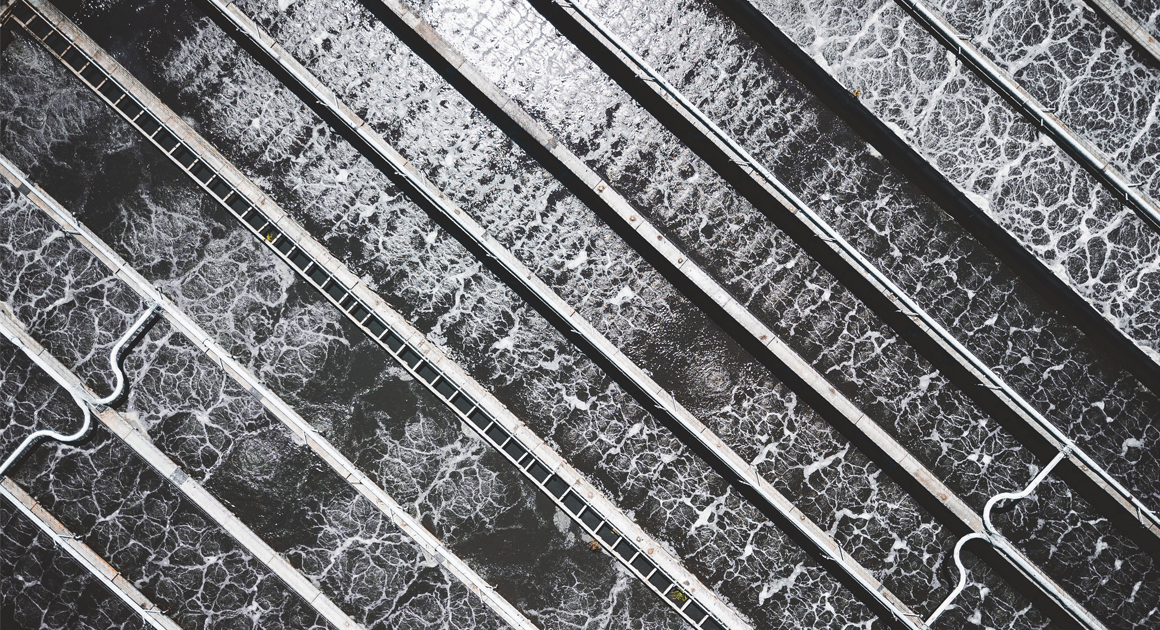WALNUT CREEK, Calif. – Brown and Caldwell, a leading environmental engineering and construction firm, is playing an integral role on a national team that will plan for and design a pilot plant to produce clean hydrocarbon fuels at a municipal wastewater treatment facility. The project, funded by a Department of Energy (DOE) research grant and SoCalGas, and led by long-time research partner Water Environment & Reuse Foundation (WE&RF), will use breakthrough technology to produce fuels such as gasoline, jet fuel, diesel and renewable natural gas from wastewater solids.
The technology, called Hydrothermal Processing, converts waste solids from a wastewater treatment plant into biocrude oil and methane gas. The biocrude and methane replaces conventional oil and gas, providing green fuels with dramatically-reduced net new carbon emissions. The renewable methane gas can be used in the same ways as natural gas. Biocrude produced in the system will be refined in an existing refinery, while the methane gas will be sold for transport in the gas pipeline system or used onsite to offset needs elsewhere in the plant. In addition to producing renewable energy, Hydrothermal Processing has the potential to dramatically reduce CO2 emissions at wastewater treatment plants by replacing the anaerobic digesters.
Brown and Caldwell Vice President John Willis, a renowned expert in biosolids and energy recovery, will lead the BC team in quantifying the life-cycle greenhouse gas emissions generated from the hydrothermal and bio-crude refining processes to help evaluate the potential for this clean renewable fuel under the federal Renewable Fuel and California’s Low-Carbon Fuel Standards.
“We are excited to be a part of this important work. Demonstrating that we can convert wastewater solids into renewable hydrocarbon fuels, while replacing fossil fuels and reducing greenhouse gas emissions, would transform wastewater treatment.”
Brown and Caldwell Vice President John Willis
According to another team member, DOE’s Pacific Northwest National Lab, if the process is fully implemented in wastewater treatment facilities across the United States, the technology could produce more than 2 billion gallons of gasoline and reduce greenhouse gas emissions by 17 million tons per year.
This summer, the DOE will validate the consortium’s concept of the technology. A nine-month feasibility study will follow and if results are promising, the design and construction of a pilot plant could begin in 2020.
Willis, who currently serves on WE&RF’s research council, has spent over 25 years helping municipal utilities develop innovative solutions to combat inefficiency and maximize energy use. His groundbreaking work includes the first Class-A thermophilic anaerobic digestion facility in the United States, innovative Class-A digestion and biogas-to-vehicle-fuel upgrades, as well as the application of thermal hydrolysis/digestion/gas-use for DC Water, Hampton Roads Sanitation District in Virginia, the city of Raleigh Public Works Department in North Carolina, and the Washington Suburban Sanitary Commission in Maryland.
Other members of the consortium include Genifuel Corp. with technology from the Department of Energy’s Pacific Northwest National Laboratory; Merrick and Co.; Sempra Energy’s Los Angeles-based Southern California Gas Co. (SoCalGas); Texas-based Tesoro Corp.; Metro Vancouver; MicroBio Engineering, and over a dozen utility partners. Central Contra Costa Sanitary District in the San Francisco Bay Area will host the pilot system.
